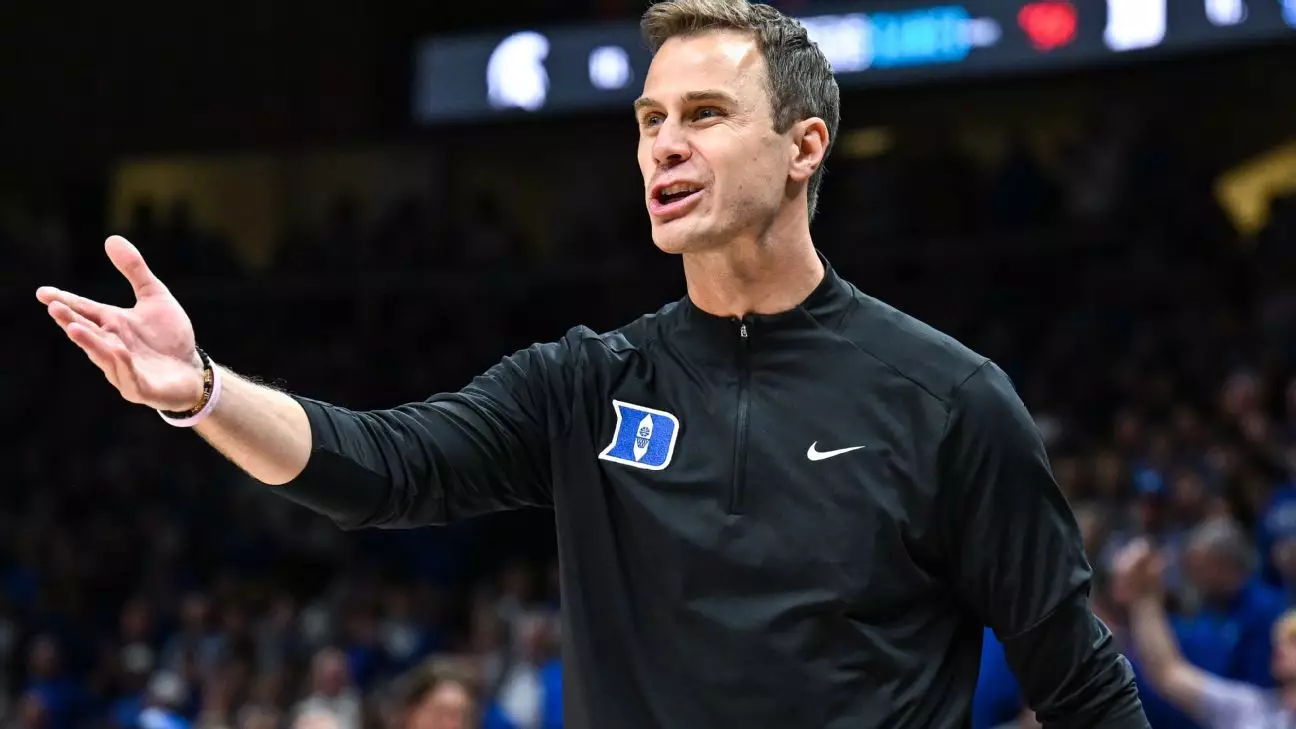The Duke Blue Devils basketball team, a perennial powerhouse, recently faced a disheartening yet familiar challenge: player cramping, particularly among their young athletes. This issue not only affects game performance but raises concerns about the physical readiness and overall health of these promising freshmen. Coach Jon Scheyer’s comments following the team’s narrow loss to Kentucky reflect a growing frustration and urgency surrounding this recurring problem.
During a gripping matchup against the Kentucky Wildcats, freshman center Khaman Maluach showcased his potential but was ultimately hampered by cramping issues. After appearing limited with just 10 minutes in the second half, his performance raised several alarms. Maluach, standing tall at 7-foot-2 and seen as a likely NBA lottery pick, faced a setback when he clashed with a Kentucky player while chasing a loose ball early in the half. This physical incident led to subsequent cramps that kept him on the sidelines, signaling the fragility of youthful bodies under competitive pressure.
Reserve guard Sion James experienced a similar fate after sustaining a shoulder injury from a hard contact play. His departure from the game left a hole in the Duke lineup, a reminder of how quickly injury can dismantle a carefully constructed game strategy. These incidents not only underline individual struggles but highlight a systemic issue affecting the team’s overall performance.
Coach Scheyer’s acknowledgment of the situation illuminates a broader issue within the team’s management of player health and readiness. “It’s concerning,” he stated, signifying a leadership stance that prioritizes player welfare. His remarks pointed towards the need for a thorough evaluation of training practices, conditioning, and perhaps even nutritional strategies to support these young athletes better.
Scheyer emphasized the importance of not merely preparing players to compete but also ensuring they can sustain themselves throughout the grueling demands of the season. With the balance of rigorous training and adequate recovery still being fine-tuned, it’s clear that a multifaceted approach is necessary to optimize player performance and longevity.
Cramping among athletes is not a new phenomenon, nor is it limited to Duke. Basketball, with its fast-paced nature and constant movement, places immense strain on players’ bodies. However, Duke’s situation is particularly pronounced, given the youth of their roster. Earlier in the season, another freshman star, Cooper Flagg, also battled cramping issues, limiting his contribution significantly in a previous game. As Scheyer noted, “We can’t have that happen,” amplifying his commitment to addressing these vulnerabilities.
This season’s struggles echo challenges faced by many collegiate programs that prioritize young talent. The shift from high school to collegiate levels can be challenging, both physically and mentally. Young athletes may not be adequately conditioned to handle the rigorous demands of longer, more intense games, a reality Duke must confront head-on.
So, how should Duke address these issues going forward? First, a comprehensive evaluation of the training regimen is essential. This may involve close consultation with sports science professionals who specialize in conditioning young athletes. Implementing tailored training programs that focus on endurance, flexibility, and hydration could help alleviate cramping and prevent injuries.
Additionally, attention to nutrition cannot be underestimated. A balanced diet rich in electrolytes, hydration strategies, and recovery protocols should become part of the team’s routine to reinforce player resilience.
Moreover, proactive measures may include modifying practice intensity and duration, especially in the early season when players are still acclimating. Open communication about players’ physical conditions should also be encouraged, creating an environment where athletes feel safe discussing potential health issues.
The Duke Blue Devils face an uphill battle as they strive to meld young talent with the physical demands of college basketball. Coach Scheyer’s leadership will be pivotal in navigating these challenges. By addressing cramping concerns thoughtfully and proactively, the program can not only enhance individual performances but also bolster the overall health and performance of the team as they move forward in the season. The stakes are high, and the future of the Blue Devils rests on their ability to keep their promising young talents on the court, healthy and competing at their maximum potential.

